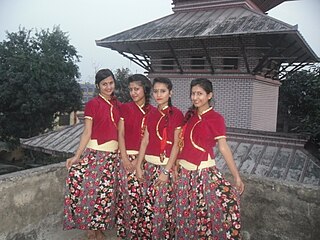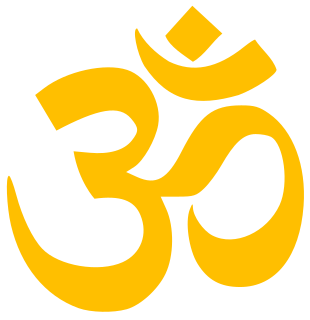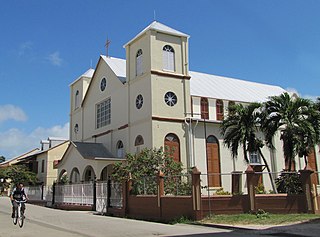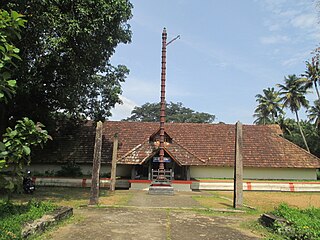
In the 2011 census, Nepal's population was approximately 26 million people with a population growth rate of 1.35% and a median age of 21.6 years. In 2016, the female median age was approximately 25 years old and the male median age was approximately 22 years old. Only 4.4% of the population is estimated to be more than 65 years old, comprising 681,252 females and 597,628 males. 61% of the population is between 15 and 64 years old, and 34.6% is younger than 14 years. In 2011, the Birth rate is estimated to be 22.17 births per 1,000 people with an infant mortality rate of 46 deaths per 1,000 live births. Compared to the infant mortality rate in 2006 of 48 deaths per 1000 live births, the 2011 IMR is a slight decrease within that 5-year period. Infant mortality rate in Nepal is higher in rural regions at 44 deaths per 1000 live births, whereas in urban regions the IMR is lower at 40 deaths per 1000 live births. This difference is due to a lack of delivery assistance services in rural communities compared to their urban counterparts who have better access to hospitals and neonatal clinics. Life expectancy at birth is estimated to be 67.44 years for females and 64.94 years for males. The mortality rate is estimated to be 681 deaths per 100,000 people. Net migration rate is estimated to be 61 migrants per 100,000 people. According to the 2011 census, 65.9% of the total population is literate.

Millions of members of the Indian diaspora, of different religions, reside and work in the Gulf Arab countries. Many of them are Hindu. Many came due to the migration of Indians and Nepalese expatriates and employees to the oil-rich states around the Persian Gulf.

Hinduism has approximately 1.1 billion adherents worldwide. Nepal (81.3%) and India (79.8%) are countries with Hindus being the majority of their respective populations. Along with Christianity (31.5%), Islam (23.2%), Hinduism is one of the three major religions of the world by percentage of population. Hinduism is the third largest religion in the world after Christianity and Islam.

Hinduism is a minority religion in Australia consisting of more than 440,300 followers, making up 1.9% of the population as of the 2016 census. Hinduism is one of the fastest growing religions in Australia mostly through immigration. Hinduism is also one of the most youthful religions in Australia, with 34% and 66% of Hindus being under the age of 14 and 34 respectively. The rapid increase in the population has fostered the creation of numerous Hindu enclaves within Australia.

For Hinduism in the State of India, see: Hinduism in West Bengal

Hinduism is the leading single religion of the Indo-Caribbean communities of the West Indies. Hindus are particularly well represented in Guyana, Suriname and Trinidad and Tobago, where they constituted 25 percent of the total population, as of 1995. Smaller groups of Indo-Caribbeans live elsewhere in the Caribbean, especially Puerto Rico, Jamaica, Belize, Barbados, Saint Vincent and the Grenadines, Saint Lucia, Cayman Islands and Bahamas.

Kerala is a state in south-western India. Most of Kerala's 33.3 million people are on of Malayali ethnicity. Most of the Malayalam and English speaking Keralites derive their ancestry from Dravidian communities that settled in Kerala.Additional ancestries derive from several centuries of contact with non-Indian lands, whereby people of Arab, Jewish, and other ethnicities settled in Kerala. Many of these immigrants intermarried with native Malayalam speakers resulting in formation of many Christians and Muslims in Kerala. A tiny number of Muslims thus take lineage from Arab settlers mixed with local population.

Hinduism is the largest religion in India, with 79.8% of the population identifying themselves as Hindus, that accounts for 966 million Hindus in India as of National Census of India, while 14.2% of the population follow Islam and the remaining 6% adhere to other religions. The vast majority of Hindus in India belong to Shaivite and Vaishnavite denominations. India is one of the three countries in the world where Hinduism is the majority.

The state religion in Pakistan is Islam, which is practiced by 96.28% of the population. Freedom of religion is guaranteed by the Pakistani constitution, which established a fundamental right of Pakistani citizens, irrespective of their religion, to equal rights. The remaining 4% practice Hinduism, Christianity, Ahmadis, Sikhism and other religions.
Asia is the largest and most populous continent and the birthplace of many religions including Buddhism, Christianity, Confucianism, Hinduism, Islam, Jainism, Judaism, Shinto, Sikhism, Taoism, and Zoroastrianism. All major religious traditions are practiced in the region and new forms are constantly emerging. Asia is noted for its diversity of culture. Islam is the largest religion in Asia with approx. 1.1 billion adherents.

Bari Brahmana is a town and a notified area committee in Samba district in the state of Jammu & Kashmir, India. The Industrial city has become the largest manufacturing centre of Jammu and Kashmir. Bari Brahmana has the largest number of industries in the state with a great share in industrial GDP of state. The name of the town is derived from two Dogri words 'Bari' meaning open ground and 'Brahmana' meaning Brahmins. Thus the name means 'the garden of Brahmins.'

Kasba is an upazila of Brahmanbaria District, Chittagong Division in east-central Bangladesh. Kasba is located approximately 150 km north of Chittagong. It was part of greater Comilla District until 1984.

Christianity is the dominant religion in Belize. The single largest denomination is the Roman Catholic Church with about 40.1% of the population, a reduction from 49.6% of the population in 2000, 57.7% in 1991 and 61.9% in 1980, although absolute numbers have still risen. Other major groups include Pentecostal with 8.4% of the population up from 7.4% in 2000 and 6.3% in 1991, Seventh-day Adventists with 5.4% of the population up from 5.2% in 2000 and 4.1% in 1991. The following of the Anglican Church has been steadily declining, with only 4.7% of the population in 2010 compared to 6.95% in 1991. About 12,000 Mennonites live mostly in the rural districts of Cayo and Orange Walk. People who declared they belong to no religion make up 15.5% of the population in 2010, more than double their 2000 census numbers. 11.2% adhere to other religions which include the Maya religion, Afro-American religions, Mormons, Hindus, Buddhists, Muslims, Bahá'ís, Rastafarians and others.

Religion in India is characterised by a diversity of religious beliefs and practices. India is a secular state with no state religion. The Indian subcontinent is the birthplace of four of the world's major religions; namely Hinduism, Buddhism, Jainism, and Sikhism. According to the 2011 census, 79.8% of the population of India practices Hinduism, 14.2% adheres to Islam, 2.3% adheres to Christianity, 1.7% adheres to Sikhism, and 0.7% adheres to Buddhism. Zoroastrianism, Sanamahism and Judaism also have an ancient history in India, and each has several thousands of Indian adherents. India has the largest population of people adhering to Zoroastrianism and Bahá'í Faith in the world, even though these religions initially grew in Persia. Throughout India's history, religion has been an important part of the country's culture. Religious diversity and religious tolerance are both established in the country by the law and custom; the Constitution of India has declared the right to freedom of religion to be a fundamental right.

South Africa is a secular state with a diverse religious population. Its constitution guarantees freedom of religion. Many religions are represented in the ethnic and regional diversity of the population. Christianity, especially in its Protestant forms, predominates.
Myanmar (Burma) is a multi-religious country. There is no official state religion, but the government shows preference for Theravada Buddhism, the majority religion of the nation. According to both the 2014 census of the Burmese government Buddhism is the dominant religion, of 88% of the population, practiced especially by the Bamar, Rakhine, Shan, Mon, Karen people and Chinese ethnic groups. Bamar people also practice the Burmese folk religion under the name of Buddhism. The new constitution provides for the freedom of religion; however, it also grants broad exceptions that allow the regime to restrict these rights at will. Ethnic minorities practice Christianity, Islam, and Hinduism.

Hinduism is the most widely professed religion in Kerala, with significant Muslim and Christian communities. Kerala has a reputation of being, communally, one of the most religiously diverse states in India. According to 2011 Census of India figures, 54.73% of Kerala's population are Hindus, 26.56% are Muslims, 18.38% are Christians, and the remaining 0.33% follow other religions or have no religion.
The 2001 Census of India was the 14th in a series of censuses held in India every decade since 1871.

Mauritius is a religiously diverse nation, with Hinduism being the most widely professed faith. The people of Indian descent (Indo-Mauritian) follow mostly Hinduism and Islam. The Franco-Mauritians, Creoles and Sino-Mauritians follow Christianity. A minority of Sino-Mauritians also follow Buddhism and other Chinese-related religions. According to the 2011 census made by Statistics Mauritius, Hinduism is the major religion at 48.54%, followed by Christianity at 32.71% (with Catholicism as the largest Christian denomination at 26.26 %, followed by Islam 17.30% and Buddhism 0.18% in terms of number of adherents.
Religion in Maharashtra is characterized by a diversity of religious beliefs and practices. Maharashtra possesses six of the world's major religions; namely Hinduism, Islam, Buddhism, Jainism, Christianity, and Sikhism.















